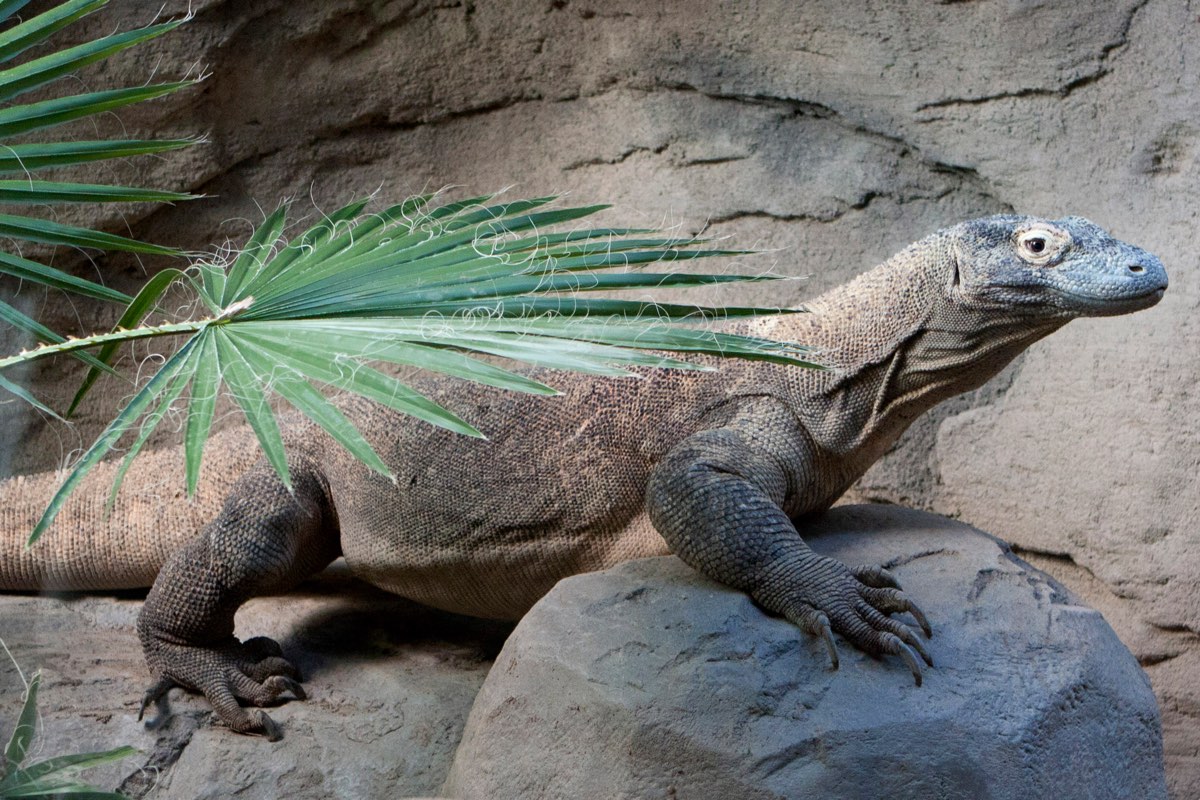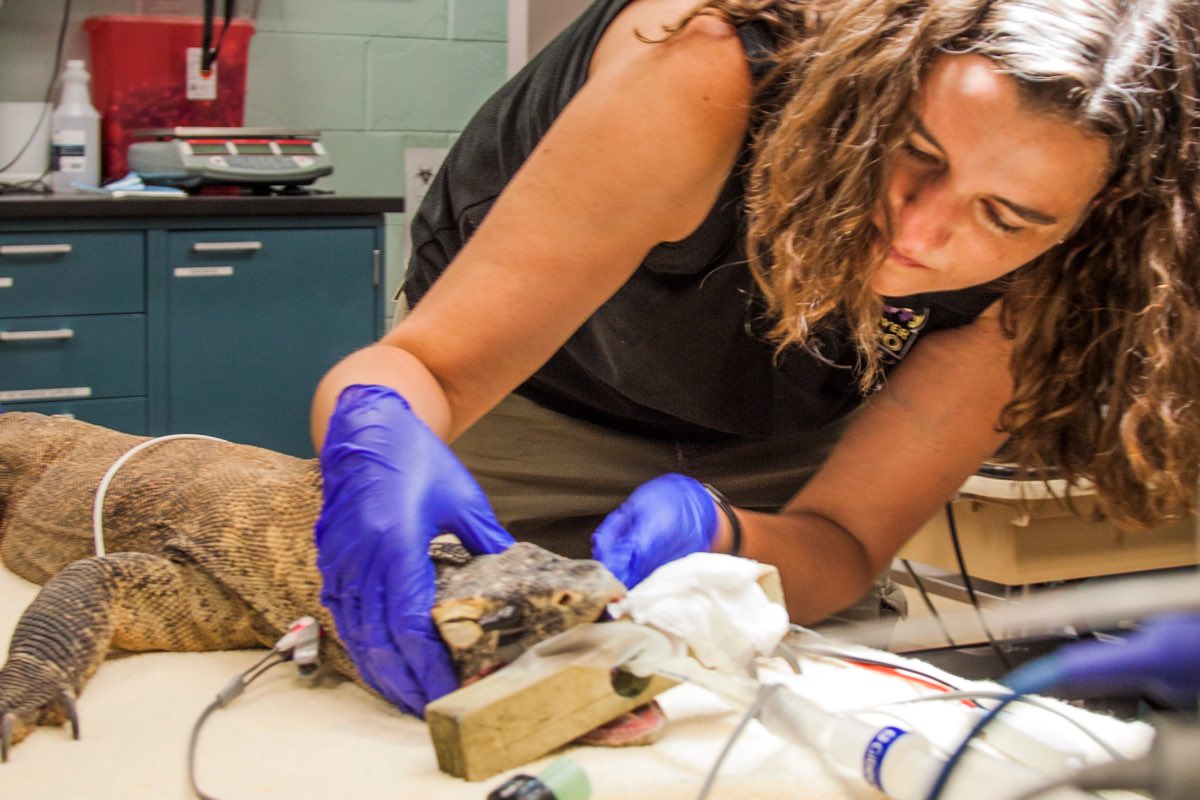Female Komodo Dragon Saved After Her Eggs Burst

DENVER — A complex surgery has saved the life of a captive Komodo dragon at the Denver Zoo.
Anika, a 6-year-old female Komodo dragon, developed dystocia, a condition in which reptiles are unable to deposit their eggs. Dystocia is also called egg-binding, and it can be fatal for female lizards.
Zoo staff first noticed that Anika's abdomen was swollen and that she'd lost weight, even though her appetite (and eating) had increased dramatically. A battery of tests, including an ultrasound and an endoscope examination of the dragon's abdomen, revealed blood in the abdominal cavity, as well as eggs. [In Photos: Rare Birth of 'Baby Dragons' at Slovenia Cave]
The next day, veterinarians put Anika under anesthesia for emergency surgery. According to the zoo, multiple eggs had ruptured inside the Komodo dragon, necessitating the removal of yolk from these eggs, a fertile breeding ground for deadly bacteria. The surgeons also removed Anika's ovaries and developing eggs so that the problem would not reoccur in the future.

Most Komodo dragons with dystocia die, the Denver Zoo said. A surgical checkup on June 28, however, suggested that Anika is recovering well. Her stitches have been removed, and she has been treated with antibiotics and nutrients to prevent future infection.
"We are so happy that Anika is still with us today," Denver Zoo staff veterinarian Gwen Jankowski said in an email statement. "Komodo dragons are considered a vulnerable species by the International Union for Conservation of Nature. Being able to save one has been deeply meaningful to the entire Denver Zoo."
Komodo dragons (Varanus komodoensis) are native to Indonesia. According to the Smithsonian's National Zoo, which hatched the lizards for the first time outside of Indonesia, Komodo dragons can grow up to 10 feet (3.05 meters) long. The largest known specimen weighed 366 lbs. (166 kilograms), though 154 lbs. (70 kg) is more standard for the reptiles.
Sign up for the Live Science daily newsletter now
Get the world’s most fascinating discoveries delivered straight to your inbox.
Komodo dragons have a reputation for deadly spit: Researchers used to think this bacteria-laden fluid helped the dragons kill prey by triggering deadly infections. In 2009, however, researchers led by Bryan Fry of the University of Queensland in Australia found that Komodo dragons actually produce a weak venom that increases blood loss in bitten prey.
Like some other reptiles, Komodo dragons can have virgin births. This process, known as parthenogenesis, was first observed in 2006 at London's Chester Zoo. The dragon mother, Flora, had never been caged with a male, and genetic testing proved that the offspring were hers and hers alone. Parthenogenesis occurs when an egg-progenitor cell (a precursor to the developing egg) acts like a sperm and "fertilizes" another developing egg cell.
Original article on Live Science.

Stephanie Pappas is a contributing writer for Live Science, covering topics ranging from geoscience to archaeology to the human brain and behavior. She was previously a senior writer for Live Science but is now a freelancer based in Denver, Colorado, and regularly contributes to Scientific American and The Monitor, the monthly magazine of the American Psychological Association. Stephanie received a bachelor's degree in psychology from the University of South Carolina and a graduate certificate in science communication from the University of California, Santa Cruz.









